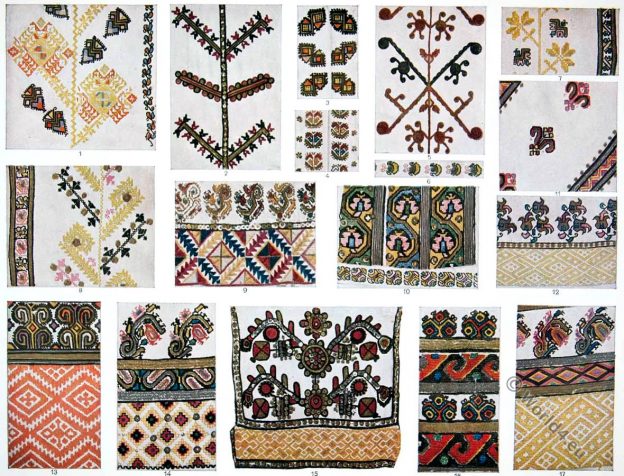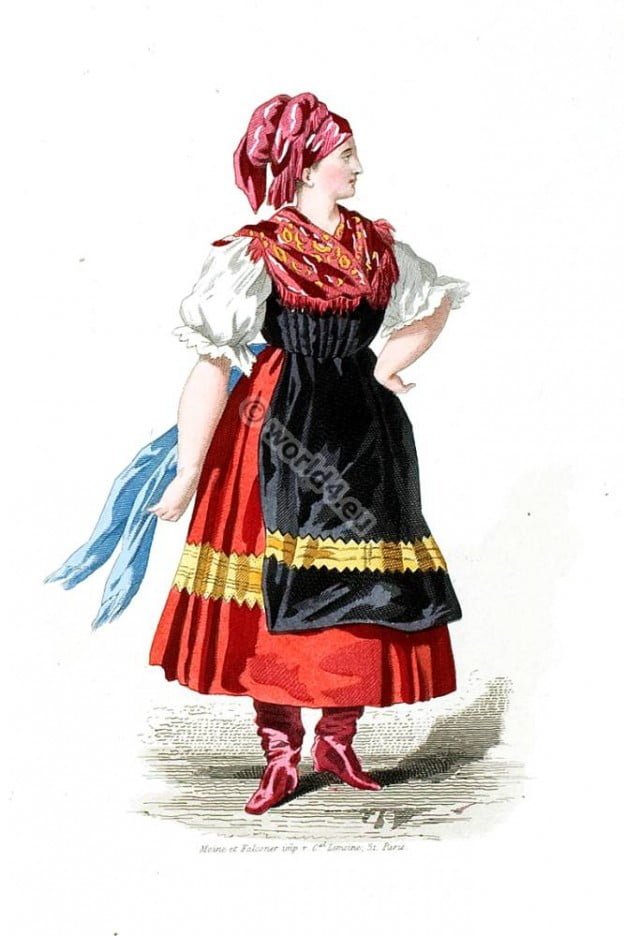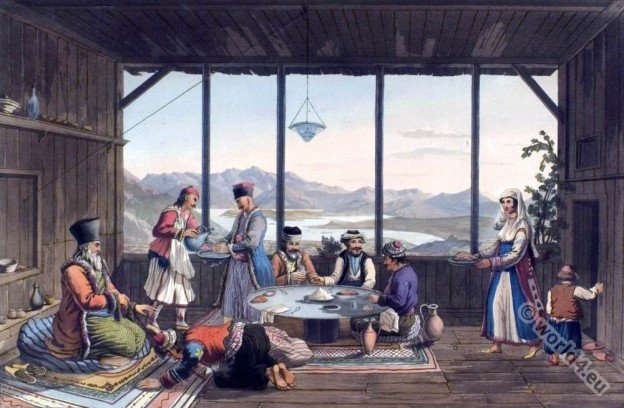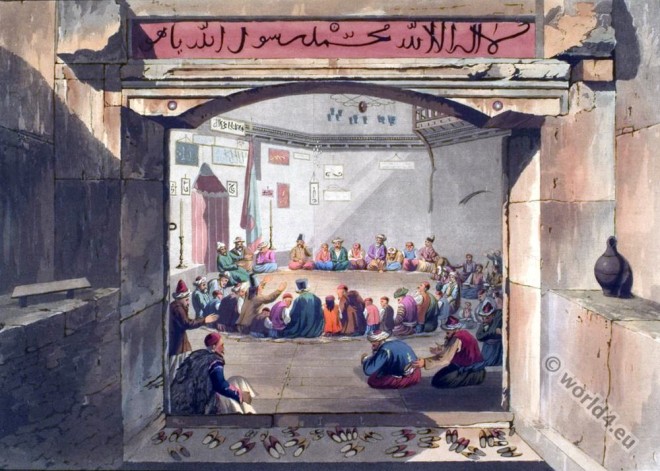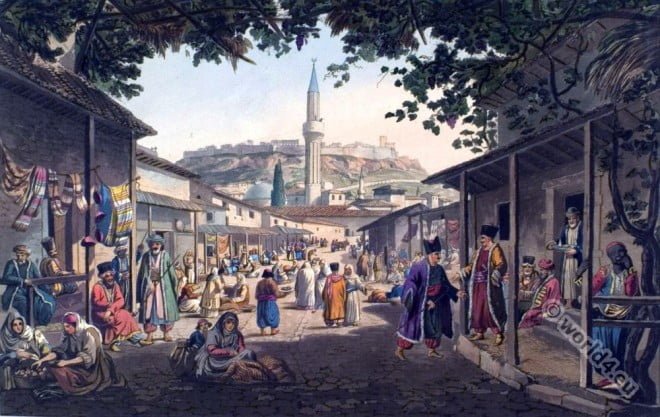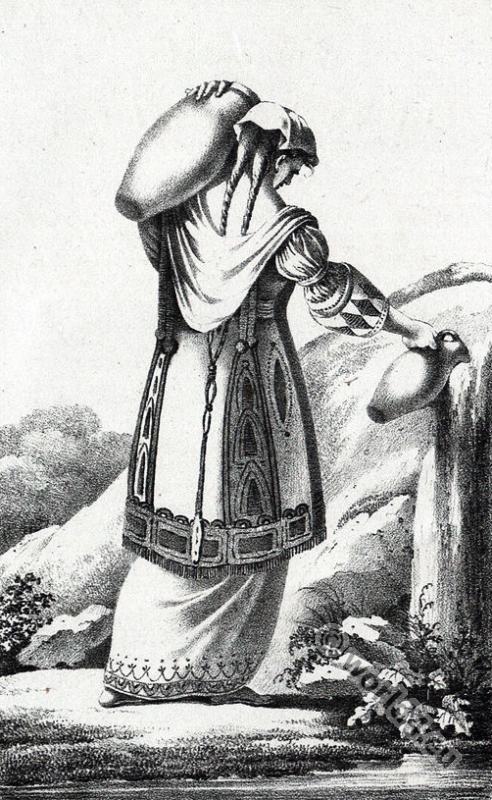Pattern, Kelim technique, embroidery with silk, felt appliqué and sequins from Kumanovo, Vodna, Romanovce near Kumanovo, Skopje, Macedonia. Ethnographic Museum, Zagreb, Croatia.
Category: Balkans
The Culture of the Balkan Peninsula
Romanian embroideries from sleeve, shoulder and front of a shirt.
Museum for Ethnology, Vienna, Austria. Romanian embroidery pattern designs of 19th century originals. Traditional embroidery from sleeve, shoulder and front of a shirt. Sleeve embroideries.
Hungarian peasant costume 1873.
Hungarian peasant costume 1873. Hungarian peasant in the Expo Park. 1st May to 2nd November 1873 at Vienna.
Costume designs of the Hungarian Homes Group 1837
Costume designs of the Hungarian Homes Group, in the Expo Park. Hungarian Homes Group costume, Expo Vienna 1837. Costume dessine au groupe des Maisons Hongroises, dans le Parc de l’Exposition.
Hungarian costume at the Oxen Park at the Agricultural Exhibition.
Hungarian costume at the Oxen Park at the Agricultural Exhibition. 1st May to 2nd November 1873 at Expo Park Vienna. Costume Hongrois. Parc aux Boefs de l’Exposition Agricole. Source: Jules Pelcoq: Souvenir… Read More
Dinner at Crisso. In the house of the bishop of Salona.
This prelate is receiving the homage of a Greek peasant, who kisses the ground before he applies his lips to the bishop’s hand.
Entrance to the Tower of the Winds at Athens.
To the south-east of the Roman Agora is the octagonal Tower of the Eight Winds; the Clepsydra of Andronikos Kyrrheste described by Vitruviu.
The weekly market, bazar, or market-place of Athens.
Greeks, Turks, and Albanians are then seen mingled together; and while the variegated diversity of their costumes gratifies the eye of the beholder.
Albanian folk characters in the 18th century.
Albanian folk characters in the 18th century. The Souliotes or Suliots; Albanian Suliotët were a warlike community, which inhabited the mountains around Souli in southern vilayets of Ioannina, the ancient Epirus.… Read More
The Dance of the Dervishes in the Tower of the Winds.
This tower has been converted into a Semà-Khanés or chapel for the religious dance called Semà, which is performed every Friday within its walls by an order of dancing dervishes.


